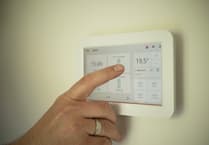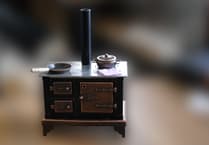YES, this is the most misleading name of a government scheme.
In a survey done recently, over 40% of the population thought that they would not pay any more than £2,500 per year, or £208 per month for their total energy bills.
Chris Philp, the chief secretary to the Treasury, said on the BBC news last Saturday ‘that no-one will pay more than £2,500 for their energy.’
It turns out that statement is totally misleading. Some customers may still pay over £4,000 in a year. So what’s going on here? It’s not what you pay that’s capped, but it’s the maximum amount that your tariffs will go up per region, but not on what you use or pay.
This is how it works: the overall average electricity consumption per year in England per household is around 2950 kWh. For Gas, it’s 12,000 kWh.
Ofgem and the government then did a bit of maths and adjusted the tariff rates so that if you are a typical average user and live in a medium size house with say three people living in it, then you will pay around £2,500 per year for your energy.
And by the way, this is still about £1,000 up from this time last year.
Proving the point, someone commented last week – ‘does this mean once I get to my £2,500 limit, say in nine months’ time, I then get free power for the rest of the year?’
This shows you that the wrong and misleading name was given to the scheme. A better name would have been, ‘Tariff rate caps.’
The point here is that very few people will pay the £2,500 per year as it’s all still depending on how much energy you use.
The good news is, if you have taken on board all my energy saving tips, along with websites like Ofgem and your own energy companies energy saving tips, you could use less than the average house and pay less than the headline price cap.
If you are one of the people reading this, then at least you know how it works, but I worry about the millions of customers who are going to have a shock when they get their next year’s bill to find that it is well over the so called ‘Cap Headline Figure.’
The general advice is still practice being energy efficient, as per all the tips.
And if you are fortunate enough to have spare money it is still a good investment to make sure the very basics are done in your house, such as: Cavity wall insulation if you have cavity walls on an older house; which is easy to check. Full draft proofing; loft insulation laid over the ceiling of your top floor of 300 mm. (not sprayed on the underside of the roof.)
A thick hot water jacket. If you have full central heating, make sure you have a fully controllable air thermostat and time setter, and that all the radiators have thermostats fitted to them for controlling the heat of individual rooms.
Unless you have a fully computerized system, it’s going to be a busy time adjusting all this, but it could be well worth it.
Last word – don’t panic we will all get through this despite the senseless war.





Comments
This article has no comments yet. Be the first to leave a comment.